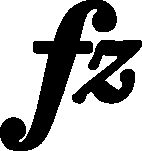



Articulation, Accents, Hairpins
|
b. 240
|
composition: (Op. 4), Sonata in C minor, Mvt IV
..
It is unclear whether the A mark is to be understood as a long accent or as a diminuendo – both versions seem to be musically acceptable. In the main text we provide an accent due to the shape of the mark, closer to accents. Moreover, according to us, the beginning of the tenor voice motif, emphasised by a slur, is another argument for an accent. In GE (→FE,EE,IE) the mark, extended between both crotchets, is definitely a diminuendo. category imprint: Graphic ambiguousness; Differences between sources issues: Long accents , Inaccuracies in GE |
||||||||
|
b. 248
|
composition: (Op. 4), Sonata in C minor, Mvt IV
..
The arched line visible in A, going through to the next bar, seems to continue the bottom arm of the category imprint: Graphic ambiguousness; Differences between sources; Source & stylistic information issues: Inaccuracies in GE , Corrections in A |
||||||||
|
b. 249
|
composition: (Op. 4), Sonata in C minor, Mvt IV
..
The absence of the wedge in GE (→FE,EE,IE) is most probably due to an oversight by the engraver of GE. category imprint: Differences between sources issues: Errors in GE |
||||||||
|
b. 249-253
|
composition: (Op. 4), Sonata in C minor, Mvt IV
..
Generally speaking, the long accents added in GE are justified – Chopin indicated such a performance in the two preceding four-bar sections, as well as in bars 40-55. He used long, short and vertical accents and category imprint: Differences between sources issues: Inaccuracies in FE , GE revisions , EE inaccuracies , |
||||||||
|
b. 253
|
composition: (Op. 4), Sonata in C minor, Mvt IV
..
In A the accent mark is not very long in itself, yet due to the quite dense notation, it fills more or less half the length of the section between the chord and the bar line, which allows us to consider it a long accent. This is how it was reproduced in GE. The short accents in the remaining editions are inaccuracies by the engravers. See also the notes on bars 249-253 and 254-256. category imprint: Graphic ambiguousness; Differences between sources issues: Long accents , Inaccuracies in FE , EE inaccuracies , |

 in
in  hairpin. However, according to us, it is an illusion – it was probably added as an extension to the slur, since extending one arm of the
hairpin. However, according to us, it is an illusion – it was probably added as an extension to the slur, since extending one arm of the 

 marks (in various configurations). Due to the above, although the very accenting results from the preceding phrases, it is difficult to say which marks would be used here and next to which chords, hence in the main text we neither include the
marks (in various configurations). Due to the above, although the very accenting results from the preceding phrases, it is difficult to say which marks would be used here and next to which chords, hence in the main text we neither include the